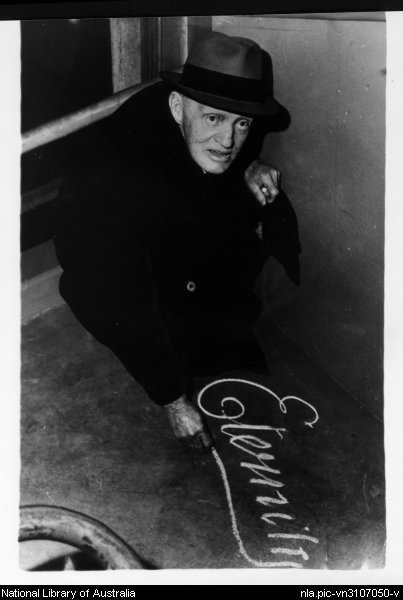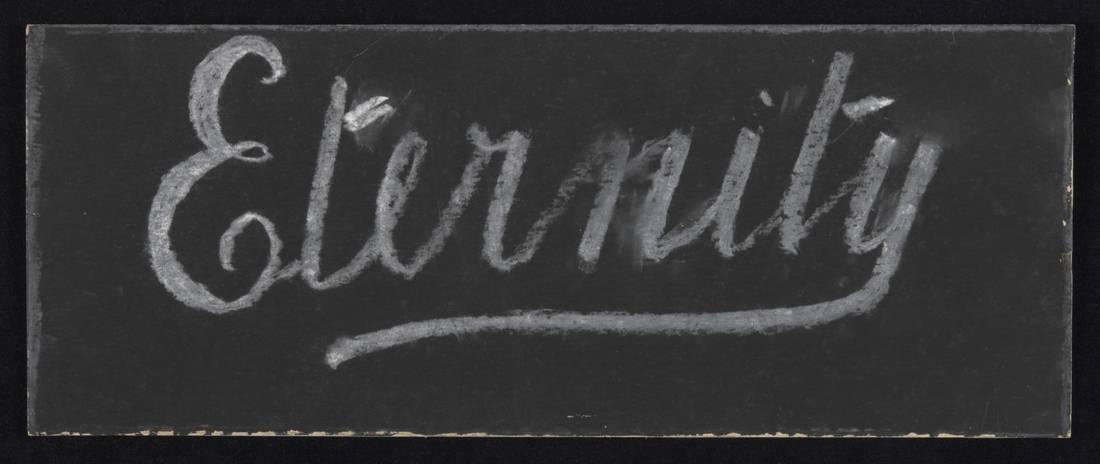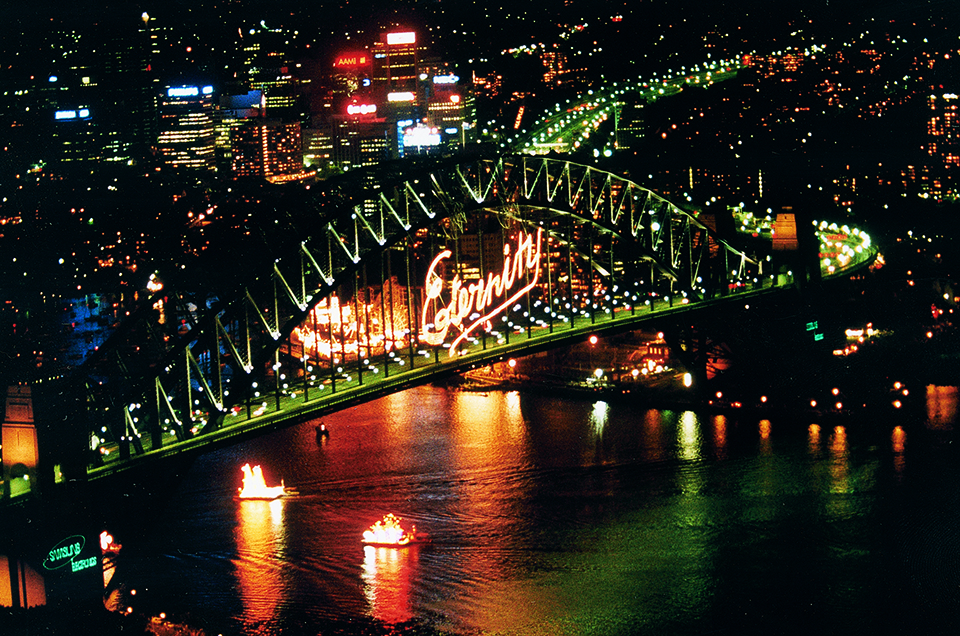The Dictionary of Sydney was archived in 2021.
Eternity
Citation
Persistent URL for this entry
To cite this entry in text
To cite this entry in a Wikipedia footnote citation
To cite this entry as a Wikipedia External link
Eternity
[media]From 1932 until 1966, the word Eternity regularly appeared on the footpaths in different parts of the city and inner suburbs of Sydney, written in a perfect copperplate script. At first it was done in chalk, later with more durable crayon. It has been estimated that it was inscribed about half a million times. A faded rendition of an original inscription was allegedly found way above the pavements, on the inside of the bell of the clock tower of the old General Post Office (GPO) in Martin Place when it was being restored in 1997. The clock tower was demolished as a precaution against bombing during World War II and not reassembled until 1964, so if this inscription was genuine, it was possibly done at ground level.
[media]The identity of the pavement proselytiser remained unknown for years. Newspaper writers speculated, and from time to time a false confession helped to generate an air of mystery until 1956, when Arthur Stace, reformed drunk turned footpath evangelist, and janitor of the Burton Street Baptist Tabernacle, was caught in the act by Lisle Thompson, the minister. Thompson wrote up the story in a short tract, and the Sunday Telegraph carried an article exposing the identity of the scribe on 21 June 1956.
With time, the copperplate rendition of the word has acquired iconic status in Sydney's popular culture as well as in its religious life and today it is the kernel of some of the most enduring images of Sydney.
In 1968 Sydney City Council decided to inscribe Eternity permanently in the footpath at a variety of locations, but the council was sacked before this happened and the state administrators who took over the reins were not interested in such ephemera. Ridley Smith, the architect of the 1977 shopping arcade below Sydney Square, had the word inscribed in wrought aluminium on the floor.
[media]Sydney artist Martin Sharp has subsequently painted the word in bright colours. It has appeared on city banners, and most dramatically it was emblazoned across the Sydney Harbour Bridge at the stroke of midnight during the city's millennium New Year fireworks display on New Year's Eve, 1999. According to Ignatius Jones, who created the show, 'it's incredibly Sydney. It symbolised for me the madness, mystery and magic of the city'. [1]
There is also an Eternity Christian Church in the inner city, and beyond Sydney, Eternity has entered the national psyche, through the Federation Tapestry, an artwork by the Victorian Tapestry Workshop which used the Martin Sharp rendition as the centrepiece of one of its vast panels. Eternity is also the name of a gallery at the National Museum of Australia in Canberra, and the inspiration for poems, films, artworks and websites inspired by the story of its creator, Arthur Stace.
Notes
[1] Nigel A Chapman, ETERNITY at the Olympics, Wesley Mission, Sydney, viewed 20 November 2008, www.wesleymission.org.au/publications/eternity
.





